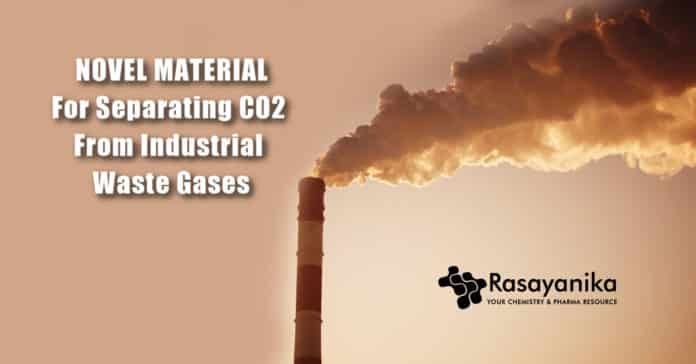Scientists develop new material for separating CO2 from industrial waste gases, natural gas, or biogas
Scientists at the University of Bayreuth have designed a novel material for particularly separating greenhouse gas carbon dioxide (CO2) from industrial waste gases, natural gas, or biogas, thereby making it available for recycling. It can be an essential contribution to climate protection and sustainable industrial manufacturing. The separating process is energy reliable, as well as reasonable. The structure and functions of the cells are discussed in the journal Cell Reports Physical Science.
In 2019, the European Commission had granted a “Green Deal,” which asks to decrease greenhouse gas emissions within the EU to be zero by 2050. This needs cutting-edge methods that can separate and retain carbon dioxide from waste gases and other gas mixtures to ensure that it is not released right into the environment. The material has one important benefit over previous operation methods: It can totally remove carbon dioxide from gas mixtures without chemically binding to carbon dioxide. The gas mixtures can be waste gases from industries, biogas, or natural gas.
In all these instances, carbon dioxide gets accumulated in the material’s cavities only as a result of physical interaction. It can
then be released without much loss of energy to be made accessible once again as a source for commercial manufacturing. Therefore, the separation method works, as per the principle of physical adsorption. Like a large tank, this material can be filled with and emptied of CO2 in an energy effective manner. The material was developed in a manner to only separate carbon dioxide and no other gas.Martin Riess, first author and researcher at the Inorganic Chemistry I research group, the University of Bayreuth, stated that their study team had done well in developing a material that fulfills 2 jobs simultaneously. The physical interactions with carbon dioxide are sufficiently strong to free and keep this CO2 from a gas mixture. But they are weak adequate to release carbon dioxide from the material with very low energy.
This material is an inorganic-organic hybrid. The chemical basis is clay minerals, including numerous separate glass platelets. Each of them is just one nanometre thick and also organized specifically one above the other. There are organic particles between the separate glass plates that function as spacers. Their structure and chemical properties have been chosen to ensure that the pore spaces developed are efficiently tailored to store carbon dioxide. Only CO2 can permeate into the material’s pore system and be retained there.
In contradiction, methane, nitrogen, and various other exhaust gas components stay outside because of their molecules’ size. The scientists have utilized the molecular filter effect to enhance the material’s selectivity for carbon dioxide. Presently, the team is developing a membrane system based on clay minerals, developed to permit the continuous, selective, and energy-efficient separation of carbon dioxide from gas mixtures.
The growth of a hybrid material custom-made for the separating and supplying of CO2 was made feasible by a special measuring system established in the Bayreuth labs, enabling the specific measurement of amounts of adsorbed gases and the selectivity of the adsorbing material. This has allowed industrial processes to be recreated genuinely. Martin Riess said that the new material has totally met all criteria related to the assessment of industrial carbon dioxide separation methods. The material can be manufactured economically and vitally contributes to lower commercial carbon dioxide emissions and the processing of biogas and acidic natural gas.
Scientists develop new material for separating CO2 from industrial waste gases, natural gas, or biogas














































